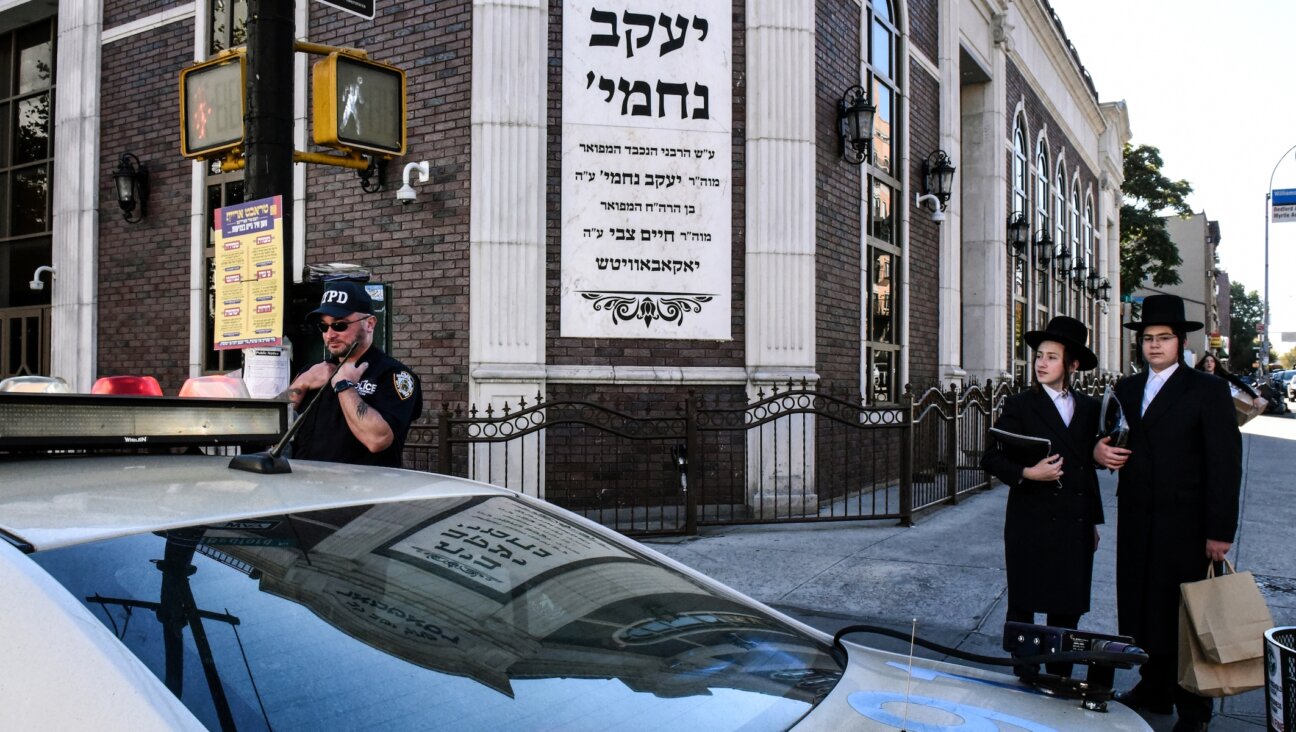French University Hands Over Holocaust Victims’ Remains

Starsbourg Image by PATRICK HERTZOG/AFP/Getty Images
The University of Strasbourg decided to hand over to the French city’s Jewish community the remains of Holocaust victims that were preserved as anatomy specimens.
The remains, preserved in several glass containers, were discovered on July 9 at the university’s Institute of Forensic Medicine by historian Raphael Toledano, after years of research and denials of their existence there by the university’s administration, metronews.fr reported Saturday.
One container had skin fragments that were removed from the body of a female Holocaust survivor after she had been murdered in a gas chamber. Another contained the intestines and stomach of another female victim, according to a statement by the Strasbourg municipality.
The remains were found to be part of a collection of skeletons and other body parts managed by August Hirt, an SS captain who served as chairman of the Reich University in Strasbourg – the institution’s name under Nazi occupation — until his suicide in 1945.
He tasked two researchers in 1943 with selecting 109 prisoners for the collection at the Auschwitz-Birkenau death camp in Poland, to be transported and gassed at the Natzweiler-Struthof camp near Strasbourg. When allied forces liberated Strasbourg, they found 86 skeletons in Hirt’s collection and transferred them for burial at a local Jewish cemetery.
But testimonies suggested some human remains of Hirt’s victims remained in the university’s possession. Some of these testimonies appeared in a book published in January by historian Michel Cymes, whose French title translates as “Hypocrites in Hell – The Death Camps’ Physicians.”
The university’s president, Alain Beretz, denied the claims and said the book unjustly harmed the present-day university’s name by not clearly distinguishing it from the Nazi-led institution that occupation forces briefly installed in the university’s stead.
The remains discovered this month are to be buried at the Cronenbourg Jewish cemetery.
The Forward is free to read, but it isn’t free to produce

I hope you appreciated this article. Before you go, I’d like to ask you to please support the Forward.
Now more than ever, American Jews need independent news they can trust, with reporting driven by truth, not ideology. We serve you, not any ideological agenda.
At a time when other newsrooms are closing or cutting back, the Forward has removed its paywall and invested additional resources to report on the ground from Israel and around the U.S. on the impact of the war, rising antisemitism and polarized discourse.
This is a great time to support independent Jewish journalism you rely on. Make a gift today!
— Rachel Fishman Feddersen, Publisher and CEO
Support our mission to tell the Jewish story fully and fairly.
Most Popular
- 1

Fast Forward Ye debuts ‘Heil Hitler’ music video that includes a sample of a Hitler speech
- 2

Opinion It looks like Israel totally underestimated Trump
- 3

Culture Cardinals are Catholic, not Jewish — so why do they all wear yarmulkes?
- 4

Fast Forward Student suspended for ‘F— the Jews’ video defends himself on antisemitic podcast
In Case You Missed It
-

Culture Should Diaspora Jews be buried in Israel? A rabbi responds
-

Fast Forward In first Sunday address, Pope Leo XIV calls for ceasefire in Gaza, release of hostages
-

Fast Forward Huckabee denies rift between Netanyahu and Trump as US actions in Middle East appear to leave out Israel
-

Fast Forward Federal security grants to synagogues are resuming after two-month Trump freeze
-
Shop the Forward Store
100% of profits support our journalism
Republish This Story
Please read before republishing
We’re happy to make this story available to republish for free, unless it originated with JTA, Haaretz or another publication (as indicated on the article) and as long as you follow our guidelines.
You must comply with the following:
- Credit the Forward
- Retain our pixel
- Preserve our canonical link in Google search
- Add a noindex tag in Google search
See our full guidelines for more information, and this guide for detail about canonical URLs.
To republish, copy the HTML by clicking on the yellow button to the right; it includes our tracking pixel, all paragraph styles and hyperlinks, the author byline and credit to the Forward. It does not include images; to avoid copyright violations, you must add them manually, following our guidelines. Please email us at [email protected], subject line “republish,” with any questions or to let us know what stories you’re picking up.












